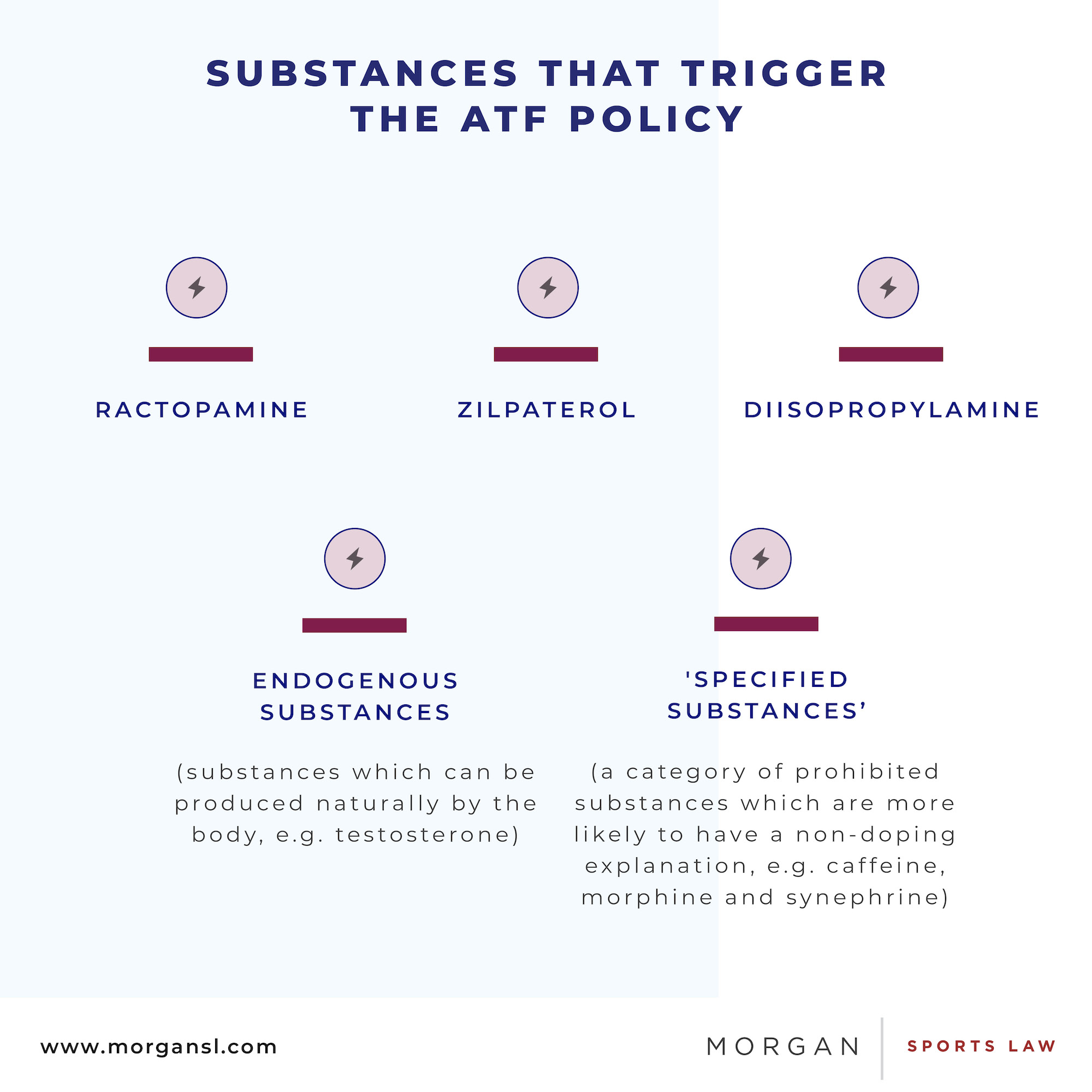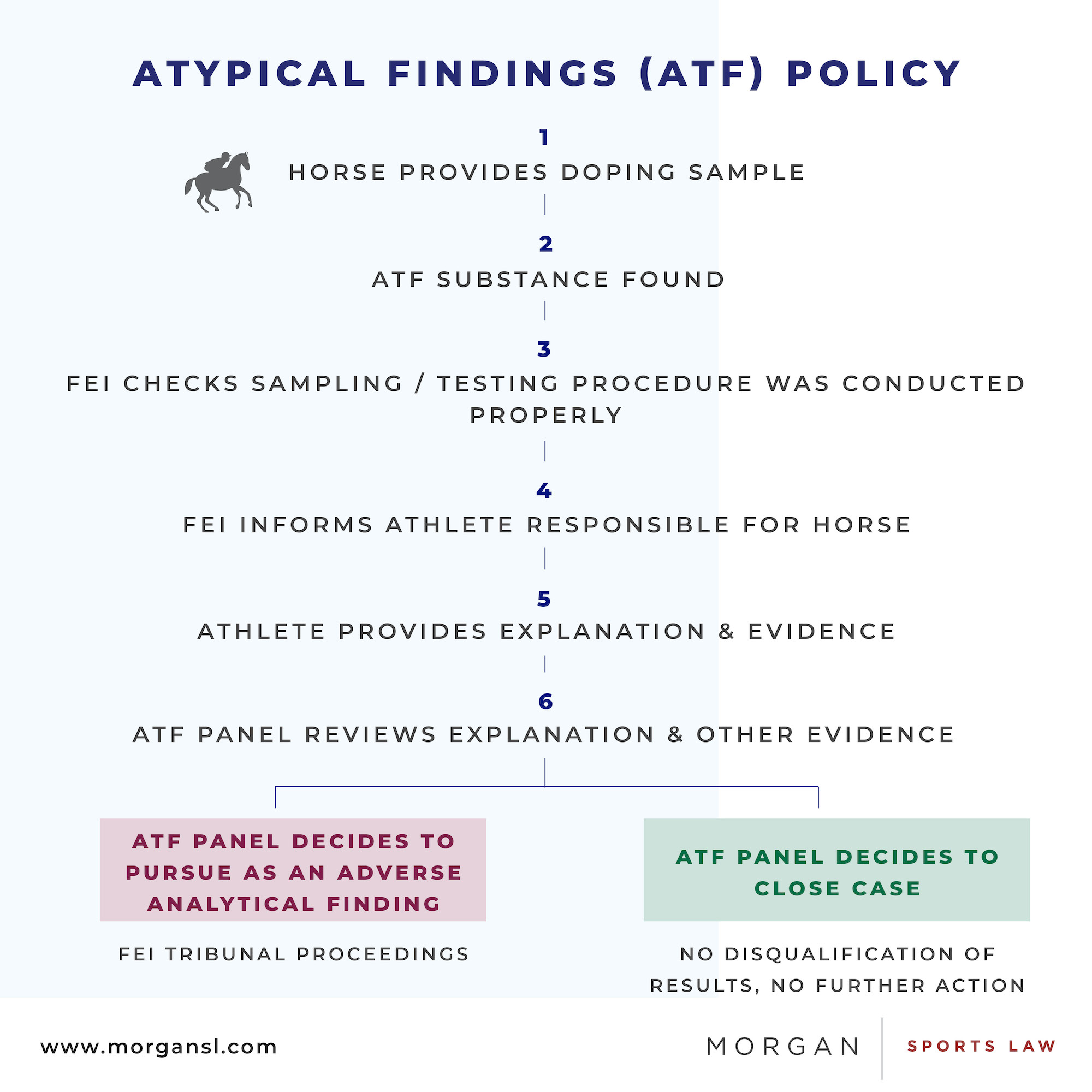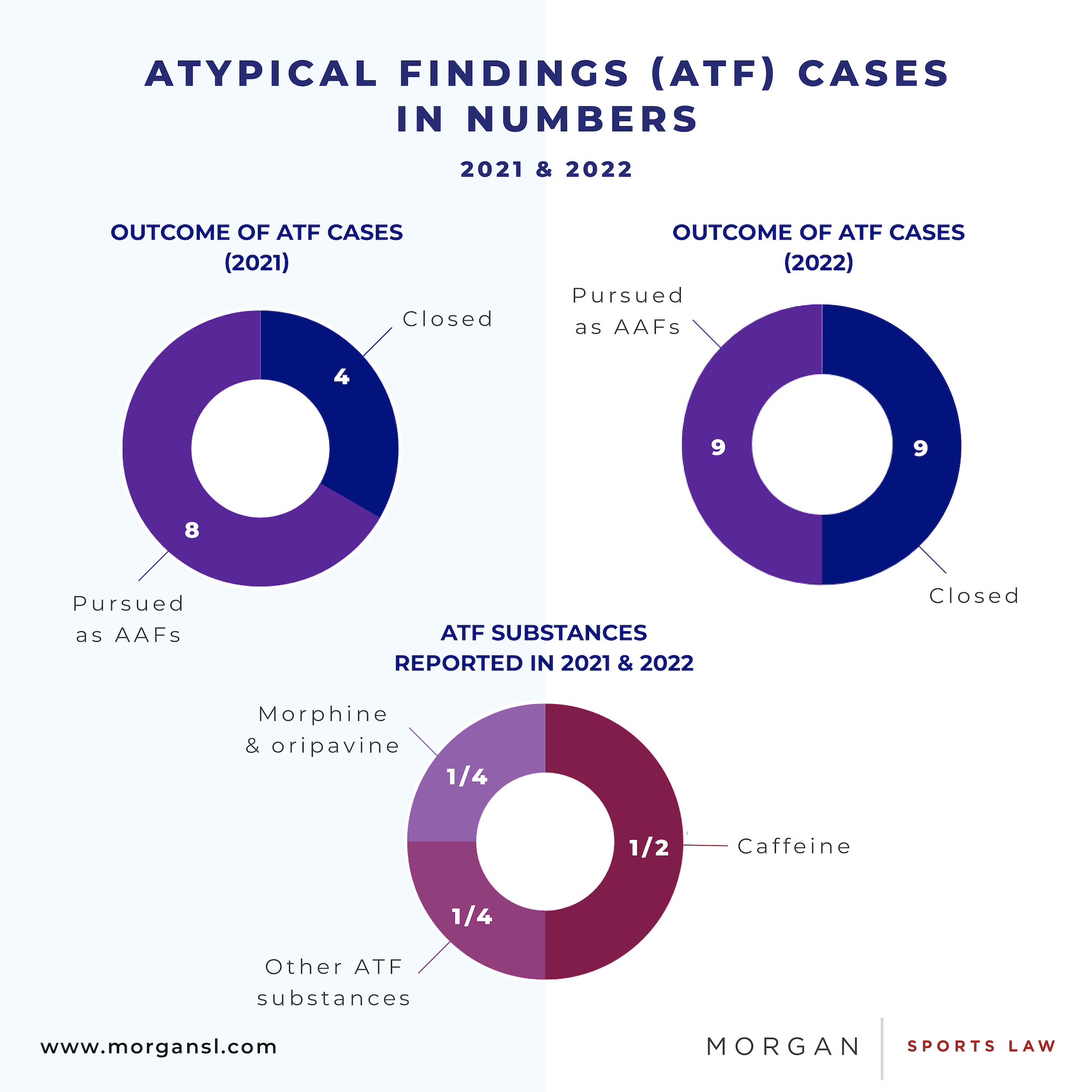Atypical Findings at the FEI: What you need to know!
What is an Atypical Finding?
FEI horses are subject to strict anti-doping rules, which means that they cannot come into contact with prohibited substances. Prohibited substances are classified as such due to their potential to: affect performance; impact horse health or welfare; and/or be misused. Each year the FEI reviews and updates the list of prohibited substances for horses.
When a prohibited substance is found in a horse’s system, it is typically reported to the athlete as an Adverse Analytical Finding (“AAF”). This is a potential violation of the equine anti-doping rules and has serious consequences: the horse will immediately be suspended from competition for two months, and the athlete responsible for the horse may be provisionally suspended while they provide their defence for the alleged rule violation. Details of the AAF will typically be published on the FEI’s website.
In 2021, the FEI introduced a new policy for certain substances that are more likely to be present in a horse’s system “because of contamination or some other non-doping explanation”. When a horse tests positive for one (or more) of these particular substances, it will initially be reported as an Atypical Finding (“ATF”) instead of as an AAF. The FEI will review whether there was any departure from the rules that could have caused the ATF and the athlete will have the opportunity to provide a defence before they are accused of an anti-doping rule violation. Neither the athlete nor the horse will be suspended while such investigations are ongoing.
At present, substances that trigger the “ATF Policy” are:
- ractopamine;
- zilpaterol;
- diisopropylamine;
- endogenous substances (types of substances which may be produced naturally inside the horse, e.g. testosterone); and
- all ‘Specified Substances’ (a sub-category of prohibited substances which are more likely to have a non-doping explanation, e.g. caffeine, arsenic, cannabinoids, morphine and synephrine).

The ATF Policy was introduced to provide more flexibility in these cases, so that the athlete is given the benefit of the doubt pending further investigation. This kind of flexibility is particularly important in equine anti-doping; while human athletes have some control and awareness over what comes into contact with their body, horses cannot be constantly monitored, even by the most careful riders.
How does the ATF Policy work?

- A horse is selected to provide a urine and/or blood sample (usually at an event).
- The sample is tested at an FEI laboratory:
• If the sample tests positive for one or more ATF substances, an ATF will be reported.
• If the sample tests positive for any other prohibited substance, an AAF will be reported. - The FEI carries out an initial review to determine whether there is any apparent departure from the anti-doping rules which could have caused the ATF. If no such departure is found, the person responsible (“PR”) is informed and invited to provide an explanation for the ATF.
- The ATF Panel reviews the explanation provided by the PR and all other evidence.
- If the ATF Panel is satisfied that the ATF was not caused by intentional doping and the PR was diligent in preventing an anti-doping rule violation, the case will be closed with no further action taken against the PR or horse. The PR must find and prove the source to have any chance of the case being closed. If the ATF Panel is not satisfied, the case will move forwards as an AAF
Advantages
The main advantage of an ATF finding over an AAF finding is that if the ATF Panel decides to drop the case, the athlete will not be charged with a rule violation and will face no sanction at all. The results from the competition will be allowed to stand (whereas in an AAF case the results are automatically disqualified, regardless of degree of fault). The proceedings remain confidential. So, if the case is dropped, it is as if it never happened.
The FEI community should consider this a sensible step forward. Consider, for example the specified substance synephrine, which has been found in over 20 samples due to its natural occurrence in grass. Previously, riders whose horses tested positive for synephrine faced FEI Tribunal proceedings (most of which ended in a settlement acknowledging that the source was contaminated hay – see for example here). Under the ATF Policy, athletes have the chance to explain the source before they are charged with a doping violation which should be quicker, less expensive, and ultimately less painful for those caught up in a contamination case.
Disadvantages
One downside to the ATF Policy is that the respondent is often given a short initial time period (in our experience, only seven days) to investigate and substantiate the source of the ATF. Unless an extension is obtained, this does not give the respondent much time to process what has happened, consider whether to instruct lawyers, and carry out a satisfactory investigation – which will likely require: speaking with all the people who came into contact with the horse before the event; obtaining vet records; and potentially testing supplements, feed and medications. However, the FEI will hopefully consider relaxing those tight timelines (which are not mandated in the applicable rules) to allow respondents a proper opportunity to gather all the evidence required to avail themselves of the benefits of the ATF Policy. That, after all, must be in the interests of both the FEI and the respondents, since neither will want to spend time and resources on a case that has nothing to do with doping.
Has the ATF Policy proved effective?
The FEI has published statistics from the two years that the ATF Policy has been in place.

2021
In 2021, 1/3 of the 12 ATF cases were closed following the investigation stage; in 2022, half of the 18 ATF cases were closed at the same point in time. In at least half of the eight cases that were pursued as AAFs in 2021, the PR (e.g. the athlete or trainer) either admitted to the rule violation or was found to bear fault (because they were unable to provide a satisfactory explanation about the source). This suggests that the ATF Policy is helping filter innocent, non-doping cases from the cases where there is fault or a lack of exculpatory evidence.
Common ATF substances
The most common ATF substances reported in 2021 and 2022 were caffeine (found in 1/3 of ATF cases) and morphine and oripavine (found together in 1/6 of ATF cases).
Caffeine is a Controlled Medication substance, so it can be used outside of competition, but is banned for horses in competition because of its performance-enhancing effects. Caffeine is also a Specified Substance (and thus a substance that triggers the ATF Policy) because the FEI considers that it is more likely to be ingested for reasons other than intentional performance enhancement, such as through contamination. Indeed, in 2020, the FEI issued a warning after caffeine was found to have contaminated a batch of popular horse feed, which led to at least one horse testing positive.
Morphine and oripavine are opioids with pain relieving effects. Like caffeine, they are Controlled Medication substances (so are only banned in-competition). While morphine is widely used in human medicine, oripavine is not available commercially (at least, not commonly) because of its toxicity. However, it is found naturally in poppy seeds (along with morphine). Therefore, when a sample tests positive for both morphine and oripavine, it is a strong indication that the source was not a pharmaceutical product but rather comes from poppy seeds (or something contaminated with poppy seeds). This is why they are classed as Specified Substances (and trigger the ATF Policy).
Conclusion
The ATF Policy has proven to be beneficial for the FEI and athletes alike. It delivers a fair and common-sense approach to cases that involve contamination or some other reasonable, non-doping explanation and it allows the FEI to focus resources on actual doping cases, where there has been intentional performance enhancement.
Authored By
Emma Waters
Senior Associate
Equestrian Services Team
Ellen Kerr
Trainee Solicitor
Equestrian Services Team
Please get in touch with our Equestrain Services Team if you have any queries about atypical findings or anti-doping in equestrian sport
Footnote
1. Note: caffeine is not currently banned for human athletes, though its use was restricted until 2004 and even now it is on the World Anti-Doping Agency’s (WADA) Monitoring Program, which means WADA is monitoring whether it is misused in sport.


